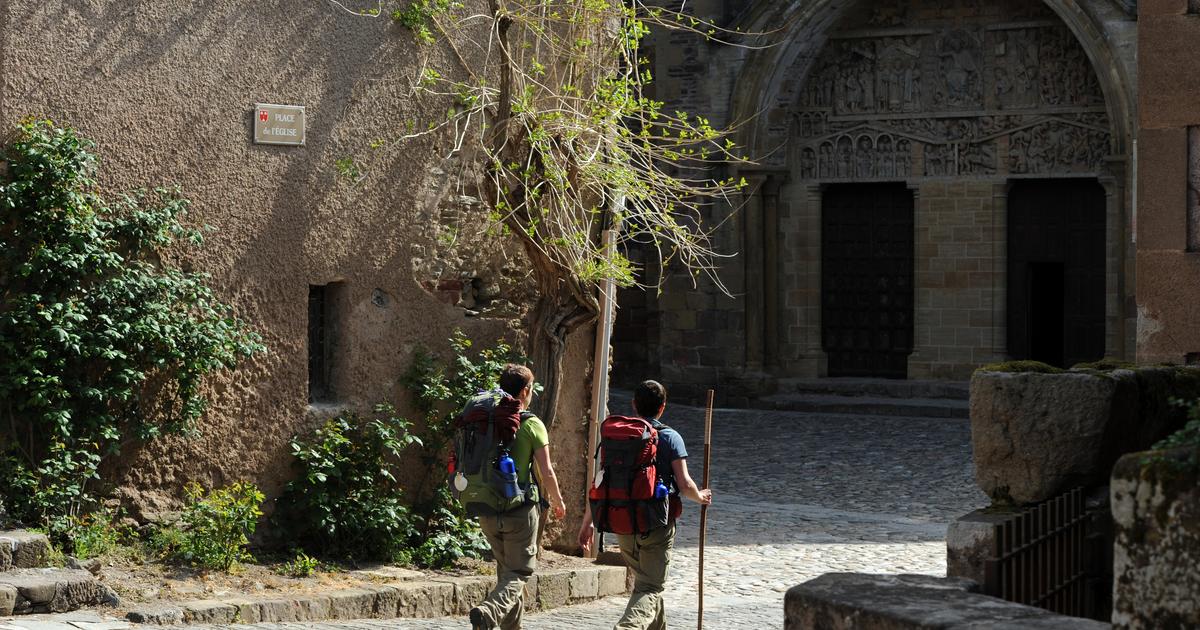Without even having traveled them, many French people know, at least by name, the Ways of Compostela.
Classified by Unesco since 1998, this set of pedestrian routes has traditionally been used since the Middle Ages by pilgrims to get to Santiago de Compostela, in Spain.
In 2019, 347,578 walkers were registered at the pilgrim reception office in the Galician capital, compared to 3,501 in 1988, while Saint-Jean-Pied-de-Port (Pyrénées-Atlantiques), point of convergence of the Paths, welcomed 61,104 pilgrims.
A success that could be further amplified in view of the new expectations of travellers.
"
The Camino de Compostela responds to a growing demand for a different, more authentic form of tourism, centered on well-being, respect for the environment and enhancement of the territories
", considers Caroline Boucher, general manager of Atout France.
The public body and the Agence française des Chemins de Compostelle presented on May 11 the results of a survey (1) on the public and their motivations, the last study of this scale dating back to 2003. Here are its main lessons:
Read alsoThree essential tips for preparing for your first hike
A desire to recharge and disconnect
Traditionally linked to the notion of "pilgrimage" and to a religious dimension, the Ways of Compostela ultimately attract far fewer believers than one would think.
Only 12% of pilgrims leave with an approach linked to their faith.
Nevertheless, the notion of spirituality is the main motivation to go specifically on the Camino de Santiago rather than on another hiking trail.
One out of two travelers (51%) cites the desire to “take time for oneself” and the need to “break up”, especially after a life shock, as main motivations.
Other most cited reasons: the desire to practice walking or hiking (45%) and meeting other travelers (41%), while the discovery of heritage is less of a priority (24%).
Read alsoHiking in the heart of Béarn, around the giant of Ossau
A majority of women and solitary walkers
One in two walkers makes their journey alone.
Here Saint-Jean-Pied-de-Port (Pyrénées-Atlantiques), a major stop on the Camino de Santiago.
Stone Cardboard
The walkers are mostly women (54%).
They walk alone (50%), much less often with friends (22%), as a couple (18%) or with family (9%), and come primarily from Paris and the Rhône and Garonne departments.
The Chemins attract as many retirees (44%) as working people (44%), most of whom exercise liberal and higher professions.
Note also the significant proportion of people under 35 who represent one in ten travellers, while the 35-50 age group is very poorly represented.
On average, walkers spend €45.40 per day on meals and accommodation and walk 26 km per day for a total stay of 28 days.
A duration
"very high compared to a traditional 'tourist' approach"
, underlines the study.
Read alsoThe favorite hiking trail of the French 2022 is...
The Puy route eclipses the other routes
Much less known on the Puy route, the Pyrenean Piedmont route (GR78) connects Montpellier to Saint-Jean-Pied-de-Port via Carcassonne over 700 km.
ADT09
There is not one, but a dozen routes to Compostela on the French side.
The route of Puy (GR65) is taken by more than one in two travelers (55%), nearly 20,000 walkers having set off from Puy-en-Velay (Haute-Loire) in 2019. This is to forget the there are many other variants, such as the Arles route (GR653, 13%), the Vézelay route (GR654, 12%) or the Pyrenean Piedmont route (GR78, 6%).
One of them, the Tours route (GR655,
via Turonensis
), leaves from Paris, at the foot of the Saint-Jacques tower.
What create an “imbalance in attendance between the routes”, even the “overcrowding of certain sections of the Puy route at certain times”, observes the Agency, which specifies that the other routes only welcome a few thousand walkers on a whole year.
The lack of accommodation and facilities (toilets, water points, garbage cans, etc.), poor signposting of the trails or quite simply ignorance can explain the lack of attractiveness of the other routes.
Read alsoVia Garona, the other way to Compostela
Accommodation: between improvisation and lack of beds
While one out of two travelers (54%) books their accommodation before departure, totally or partially, a large proportion prefer to leave room for improvisation by booking it the day before for the next day, or even the same day (33%).
Appreciated for their low price, stopover lodges are the most popular accommodation (81%), far ahead of bed and breakfasts (30%), presbyteries (19%) and hotels (15%).
However, there are significant differences by age.
Thus, the bivouac is the second mode of accommodation used by those under 35 years old.
The accommodation offer is a weak point underlined by the respondents, 43% of them having encountered difficulties in finding a roof during their journey.
In question, the lack of accommodation in certain areas, the lack of available beds/rooms and accommodation that is too expensive for the planned budget.
Read alsoSpecial bed and breakfast 2022: 150 addresses for sunny days, our search engine to find your happiness
(1) Survey carried out from May to November 2021 via questionnaires distributed online or in the field in around 500 places spread over all of the Caminos de Compostela in France. Of the 3,640 testimonies collected, 3,565 were retained for the investigation.

